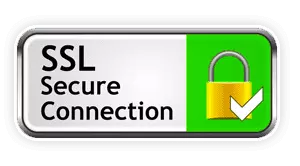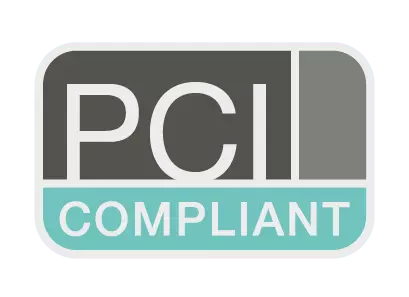John Deere 200D and 200DLC Excavators Operator's Manual (OMT226908)
Catalog:
Price: US$ 29.00
Complete operator's manual for John Deere 200D and 200 DLC Excavators, with all the information to maintain & operate John Deere Excavators 200D and 200DLC.
omt226908 - 200D and 200DLC Excavator Operator's Manual.pdf
omt226908 - 200D and 200DLC Excavator Operator's Manual.epub
Total Pages: 456 pages
File Format: PDF/EPUB/MOBI/AZW (PC/Mac/Android/Kindle/iPhone/iPad; bookmarked, ToC, Searchable, Printable)
Language: English
omt226908 - 200D and 200DLC Excavator
Table of Contents
Introduction
IMPORTANT
EPA Non-road Emissions Control Warranty Statement—Compression Ignition
CARB Non-road Emissions Control Warranty Statement—Compression Ignition
Technical Information Feedback Form
Section 1-1: Safety—Safety and Operator Conveniences
Safety and Operator Convenience Features
Section 1-2: Safety—General Precautions
Recognize Safety Information
Follow Safety Instructions
Operate Only If Qualified
Wear Protective Equipment
Avoid Unauthorized Machine Modifications
Add Cab Guarding for Special Uses
Inspect Machine
Stay Clear of Moving Parts
Avoid High-Pressure Fluids
Avoid High-Pressure Oils
Work In Ventilated Area
Prevent Fires
Clean Debris from Machine
Prevent Battery Explosions
Handle Chemical Products Safely
Dispose of Waste Properly
Prepare for Emergencies
Section 1-3: Safety—Operating Precautions
Use Steps and Handholds Correctly
Start Only From Operator's Seat
Use and Maintain Seat Belt
Prevent Unintended Machine Movement
Avoid Work Site Hazards
Keep Riders Off Machine
Avoid Backover Accidents
Avoid Machine Tip Over
Use Special Care When Lifting Objects
Add and Operate Attachments Safely
Prevent Unintended Detonation of Explosive Devices
Section 1-4: Safety—Maintenance Precautions
Park and Prepare for Service Safely
Service Cooling System Safely
Remove Paint Before Welding or Heating
Make Welding Repairs Safely
Drive Metal Pins Safely
Section 1-5: Safety—Safety Signs
Replace Safety Signs
Safety Signs
Safety Signs Installed in Cab—Hydraulic Coupler—If Equipped
Safety Signs Installed on Hydraulic Coupler—If Equipped
Section 2-1: Operation—Operator's Station
Pedals, Levers, and Panels
Front Switch Panel
Front Switch Panel Functions
Rear Panel
Horn
Power Dig Button
Pilot Shutoff Lever
Left Console
Travel Alarm and Travel Alarm Cancel Switch
Seat Heater Switch—If Equipped
Reversing Cooling Fan Switch—If Equipped
Cab Heater and Air Conditioner
Selecting Display Between Celsius and Fahrenheit
Operating the AM/FM Radio
Secondary Exit Tool
Opening Upper Front (Secondary Exit) Window
Removing and Storing the Lower Front Window
Opening Cab Door Window
Opening and Closing the Polycarbonate Type Roof Exit Cover
Adjusting the Mechanical Suspension Seat
Adjusting the Air Suspension Seat—If Equipped
Adjusting Pilot Control Lever Console Height
Section 2-2: Operation—Monitor Operation
Monitor
Monitor Functions
Monitor Start-Up
Main Menu
Time Set Menu
Selecting an Attachment From Default Screen
Selecting an Attachment From Main Menu
Attachment Specification Screen
Pump 2 Flow Rate Adjustment
Displaying Operating Conditions
Maintenance Settings
Screen Display When Scheduled Maintenance is Due
Fuel Rate Display/No Display
Language Settings
Alarm Occurrence Screen
Section 2-3: Operation—Operating the Machine
Before Starting Work
Operator's Daily Machine Check Before Starting
Engine Break-In Period
Starting Engine
Cold Weather Start Aid—If Equipped
Cold Weather Warm-Up
Travel Pedals and Levers
Locking the Hydraulic Coupler to the Attachment
Unlocking the Hydraulic Coupler From the Attachment
Control Lever Pattern Operation
Mechanical Control Lever Pattern Selector—If Equipped
Control Lever Pattern Conversion
Operating In Water and Mud
Driving Up a Steep or Slippery Slope
Lifting
Lower Boom With Engine Stopped
Parking the Machine
Loading and Unloading for Transport
Towing Machine
Lifting Machine
Section 3-1: Maintenance—Machine
Diesel Fuel
Lubricity of Diesel Fuel
Handling and Storing Diesel Fuel
Biodiesel Fuel
Testing Diesel Fuel
Minimizing the Effect of Cold Weather on Diesel Engines
Alternative and Synthetic Lubricants
Diesel Engine Oil—Stage II Engine
Diesel Engine Oil and Filter Service Intervals—Stage II Engine
Diesel Engine Oil—Tier 3 and Stage III A Engines
Diesel Engine Oil and Filter Service Intervals—Tier 3/Stage III A Engine
Hydraulic Oil
Swing Gear Case and Travel Gear Case Oils
Pump Gear Case Oil
Track Adjuster, Working Tool Pivot, Swing Bearing, and Swing Bearing Gear Grease
Heavy Duty Diesel Engine Coolant
Drain Intervals for Diesel Engine Coolant
John Deere COOL-GARD™ II Coolant Extender
Supplemental Coolant Additives
Operating in Warm Temperature Climates
Additional Information About Diesel Engine Coolants and John Deere COOL-GARD™ II Coolant Extender
Testing Diesel Engine Coolant
Section 3-2: Maintenance—Periodic Maintenance
Service Machine at Specified Intervals
Check the Hour Meter Regularly
Engine Identification
Prepare Machine for Maintenance
Open Access Doors for Service
Open Engine Cover for Service
Fuel Tank
Hydraulic Breaker and Crusher Attachments
Fluid Analysis Program Test Kits and 3-Way Coolant Test Kit
Periodic Maintenance Schedule
Section 3-3: Maintenance—As Required
Remove and Clean Fuel Tank Inlet Screen
Check Windshield Washer Fluid
Drain Water and Sediment from Fuel Tank Sump
Drain Water Separator Filter
Check and Clean Air Cleaner Dust Unloader Valve
Check and Adjust Track Sag
Check Coolant
Draining Auxiliary Fuel Filter and Water Separator—If Equipped
Section 3-4: Maintenance—10 Hours or Daily
Check Engine Oil Level
Check Engine Coolant Level
Check Hydraulic System Oil Level
Lubricate Hydraulic Coupler—If Equipped
Section 3-5: Maintenance—Initial Service—50 Hours
Inspect and Re-Torque Track Hardware
Section 3-6: Maintenance—Every 50 Hours or Weekly
Drain Water and Sediment from Fuel Tank Sump
Drain Water Separator Filter
Section 3-7: Maintenance—Every 100 Hours
Grease Working Tool Pivots
Section 3-8: Maintenance—Initial Service—250 Hours
Drain and Refill Engine Break-In Oil and Replace Filter
Section 3-9: Maintenance—Every 250 Hours
Check and Adjust A/C Belt
Check Swing Gear Case Oil Level
Drain Hydraulic Oil Tank Sump
Check Pump Drive Gear Case Oil Level
Check Battery Electrolyte Level and Terminals
Check Travel Gear Case Oil Level
Clean Primary Air Cleaner Element
Take Engine Oil Sample
Inspect and Re-Torque Track Hardware
Section 3-10: Maintenance—Every 500 Hours
Grease Front End Pin Joints
Grease Swing Bearing
Grease Swing Bearing Gear
Replace Water Separator Filter
Replace Final Fuel Filter
Replacing Auxiliary Fuel Filter and Water Separator—If Equipped
Drain and Refill Engine Oil and Replace Filter
Check Air Intake Hoses
Clean Cab Fresh Air and Cab Recirculation Air Filters
Take Fluid Samples
Section 3-11: Maintenance—Every 1000 Hours
Drain and Refill Swing Gear Case Oil
Replace Hydraulic Oil Tank Filter
Replace Pilot Oil Filter
Inspect Serpentine Belt
Drain and Refill Pump Drive Gear Case Oil
Clean Engine Crankcase Vent Tube
Replace Air Cleaner Elements
Replace Air Cleaner Dust Valve
Check Coolant
Section 3-12: Maintenance—Every 2000 Hours
Check and Adjust Engine Valve Lash
Drain and Refill Travel Gear Case Oil
Section 3-13: Maintenance—Every 4000 Hours
Replace Engine Crankshaft Dampener
Section 3-14: Maintenance—Every 5000 Hours
Drain and Refill Hydraulic System Oil
Replace Hydraulic Tank Vent Cap Filter
Section 3-15: Maintenance—Every 6000 Hours
Drain Cooling System
Cooling System Fill and Deaeration Procedure
Section 4-1: Miscellaneous—Machine
Bleed Fuel System
Cleaning Radiator, Oil Cooler, Charge Air Cooler, A/C Condenser, and Fuel Cooler
Do Not Service or Adjust Injection Nozzles or High Pressure Fuel Pump
Do Not Service Control Valves, Cylinders, Pumps, or Motors
Precautions for Alternator and Regulator
Handling, Checking, and Servicing Batteries Carefully
Using Battery Charger
Using Booster Batteries—24-Volt System
Replacing Batteries
Fluid Sampling Test Ports—If Equipped
Welding On Machine
Clean the Machine Regularly
Adding 12—Volt Accessories
JDLink™ Machine Monitoring System (MMS)—If Equipped
Replacing Fuses
Replacing Bucket Teeth
Replacing Bucket Tooth Tip—Heavy-Duty Bucket
Removing the Bucket
Track Sag General Information
Unified Inch Bolt and Screw Torque Values
Metric Bolt and Screw Torque Values
Section 4-2: Miscellaneous—Operational Checkout
Operational Checkout
Section 4-3: Miscellaneous—Troubleshooting
Using Troubleshooting Charts
Engine
Electrical System
Hydraulic System
Section 4-4: Miscellaneous—Storage
Prepare Machine for Storage
Monthly Storage Procedure
Section 4-5: Miscellaneous—Machine Numbers
Record Product Identification Number (PIN)
Record Engine Serial Number
Record Travel Motor Serial Numbers
Record Swing Motor Serial Number
Record Hydraulic Pump Serial Number
Hydraulic Coupler Serial Number—If Equipped
Keep Proof of Ownership
Keep Machines Secure
Section 4-6: Miscellaneous—Specifications
200D and 200DLC Stage II Engine Specifications
200D and 200DLC Tier 3/Stage IIIA Engine Specifications
Drain and Refill Capacities
Machine Specifications
Working Ranges
Lift Capacity—Arm: 2.41 m (7 ft 11 in.), Shoe: 600 mm (24 in.)
Lift Capacity—Arm: 2.91 m (9 ft 7 in.), Shoe: 600 mm (24 in.)
Lift Capacity—Arm: 2.41 m (7 ft 11 in.), Shoe: 700 mm (28 in.)
Lift Capacity—Arm: 2.91 m (9 ft 7 in.), Shoe: 700 mm (28 in.)
Lift Capacity—Arm: 2.41 m (7 ft 11 in.), Shoe: 800 mm (32 in.)
Lift Capacity—Arm: 2.91 m (9 ft 7 in.), Shoe: 800 mm (32 in.)
John Deere 200D and 200DLC Excavators Operator's Manual (OMT226908)







